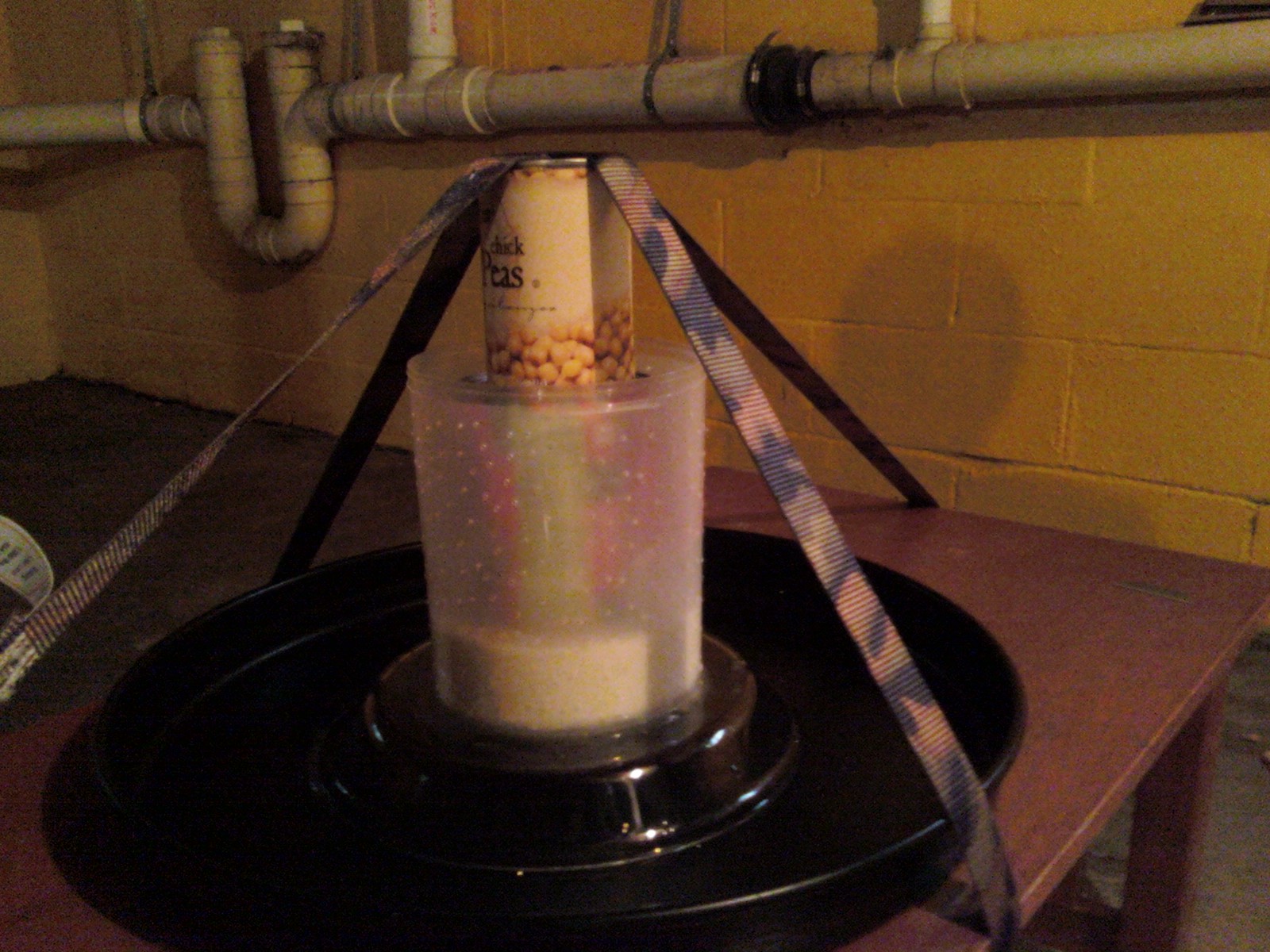|
Site.SideBar
|
- 4/24/10
- Cheddar
- I mostly followed the professor's recipe, but the cheese book helped as a second opinion on some of the steps.
- Ingredients:
- 1 Gallon unpasteurized milk from Ballston Spa
- 1/4 tablet rennet (it's been in the freezer at least a year, and worked great).
- Dannon plain yogurt for overnight inoculation. (The yogurt looked unusually good, almost like greek yogurt)
- Renneting:
- I got a perfectly clean break (as far as I can tell) for the first time after only 1 hour of letting the renneted milk set. It made lots of nice curds.
- I was following the professor's instructions, but during the renneting step I got further clarification from the following web site:
- http://www.cheeseforum.org/Making/Best_Practice_Renneting.htm
- "Whisk the milk for ~ 2 minutes to maximize dilution and optimize good curd set." Basically, I did a thorough job of mixing with the whisk for 2 minutes, and then force the liquid to stop moving (I put a slotted spoon in the pot at a few different angles to stop most of the swirling and waves.

- Setting the curd
- During this step, I needed some further clarification. The professor shows a picture and says to stop when the curds are like scrambled eggs. That's pretty tough to decide because it always looks sort of like scrambled eggs, and never looks exactly like scrambled eggs. The cheese book says to keep gently mixing the curds for 30 minutes, and then let it rest for 20 minutes. I ended up mixing the curds for around 25-30 minutes, but I don't have a good feel for when the curds are ready, or what this step does exactly. Is this when the curds should "squeek"?
- The curds sank in the whey like they are supposed to.
- Salting
- The quantity of salt seemed like sort of a lot, so I only approached putting the full 2 TB in.
- After tasting the curds, it did not taste salty, so I could go ahead and use the full amount.
- Pressing
- The current press setup worked way better than my previous attempts.
- I used a container I bought at the supermarket advertised as an ice cream container (at the time I was looking at large pvc pipes, this is roughly similar, but much lighter-duty). I drilled lots of little holes in it (holes spaced roughly 1 cm apart from each other), and cut the lid into a circle to act as the follower. I stacked a few cans on top of the follower, and used the ratcheting canoe carrier straps wrapped around a table to really wrench down on the cheese. The entire stack is as follows:

- Basement table
- Large black pizza pan (to contain the squeezed out whey)
- Upside-down pyrex pie plat (to allow the whey to run down the sides into the pizza pan)
- The ice cream container
- The curds wrapped in cheese cloth
- The follower
- Can of tomatoes
- Can of beans
- The straps wrapping the whole thing tight. Two straps are criss-crossed for stability.
- Next time:
- This time I put the cheese in the press and folded the cloth over it then put the follower on. However, the top side of the cheese ended up badly misshapen, while the bottom side was perfect. Next time while pressing the cheese, I would do two things in order to remedy this.
- Do like the professor and put the follower directly on top of the cheese, and perhaps don't fold the cheese cloth over at all:
- Press the cheese for an hour, then unwrap and flip it over, to give both top and bottom a chance to smooth out.
|



